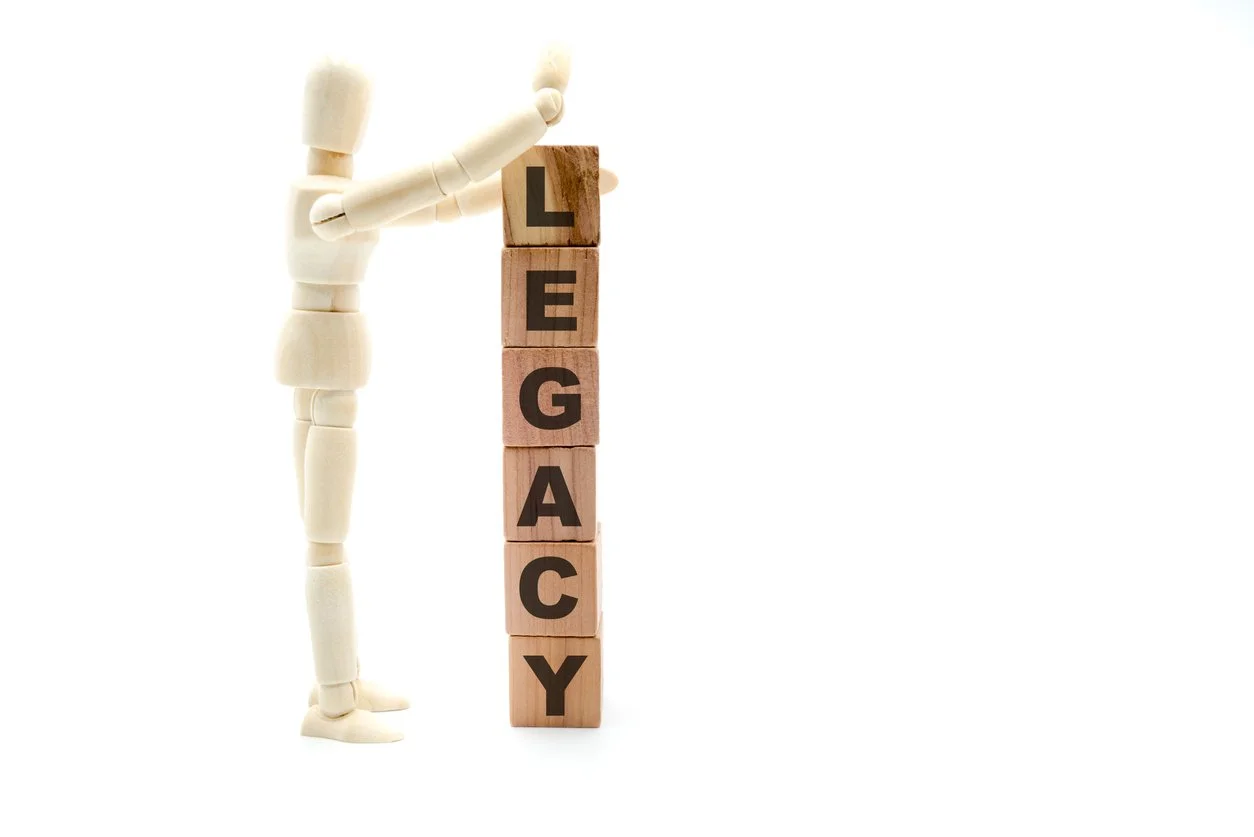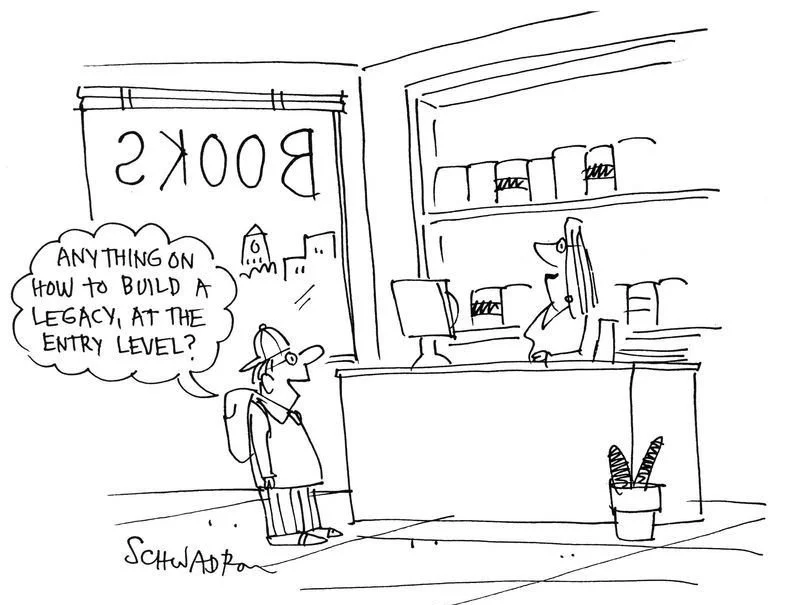Building Your Legacy
Legacy is often misunderstood. It is not rooted in recognition or praise. It lives in the systems that keep running, the decisions that continue to guide, and the sense of direction others carry long after you’ve moved on.
Everything you’ve explored so far—communication, self-awareness, follow-through, and daily discipline—has pointed toward this moment. Not because this is the final step, but because it asks more of you. Building a legacy means letting go of control and choosing to create something that can outlast you.
While we all want to be well-remembered, for true leaders, building a legacy is more than reputation. It’s the faith that those you lead will be able to lead themselves when it matters most. This kind of leadership takes time and intention.
The most fundamental moments in shaping your legacy are often the ones we don’t think twice about. It’s the daily processes we follow, the routines others can count on, the way your values show up when stress bears down, and how you care about others. Not only does this leave a leadership footprint, but you’re shaping a path for others to follow.
“The greatest use of a life is to spend it on something that will outlast it.”
Self-Assessment: Building Your Legacy
Please take a few moments to answer the following self-reflection questions. Where can you identify opportunities for personal growth in your leadership?
If I stepped away tomorrow, what would stay in place and what would fall through the cracks?
Have I documented or shared what others need, or do they rely on my memory to keep things running?
What systems or routines have I created that help others succeed—even when I’m not involved?
Is my team equipped to make decisions without waiting on me?
Where have I removed confusion or made the work easier to follow?
Who have I developed to carry responsibility forward?
What environment have I built, and would I be proud to hand it off to someone else?
Am I building for the next day, the next person, or just the next deadline?
This self-assessment is designed to support your growth in Building Your Legacy. Taking time to reflect on your answers and focusing on areas for growth will support your development.
A lasting legacy depends on what you’ve taken the time to build. That includes how people share information, how feedback is handled, how decisions are made, and how problems get worked through. If progress stops when you’re out of the room, there’s more to finish.
It helps to start by looking at what keeps getting in the way. That might be gaps in communication, unclear roles, or delays caused by waiting on one person. Avoid working around the same issues over and over. Find the cause and fix it. Clearing those roadblocks gives others the space to move with confidence.
Here are a few questions to consider:
Where do things regularly slow down, and what’s causing it?
Are people waiting on me to make decisions they could handle with clearer structure?
What habits or systems keep creating confusion?
Once you’ve handled the friction, look at what’s been built. Do your systems match what you’ve said matters? If you value transparency, is the right information easy to find? If you want others to grow, are there chances for people to take initiative and learn through experience?
More questions to ask:
If someone new stepped in, would they be able to figure out how things work?
When mistakes happen, do people feel safe enough to learn from them?
Are expectations clear, or do people keep guessing what’s needed?
It takes time to build something that keeps working without extra explanation. Tools that make sense, expectations that are understood, and routines that support the work all make a difference. When those pieces hold steady, the pressure on people does not.
“The meaning of life is to plant trees under whose shade you do not expect to sit.”
Signed, Sealed, & Delivered
Paige Turner managed a small records office. She wasn't loud or showy, but when she spoke, coworkers listened. Her office ran smoothly day-to-day, but when someone was absent, important tasks slipped through. Paige realized most processes were known only from memory.
Instead of changing everything at once, she started with small improvements. Daily tasks and important deadlines were written clearly where everyone could see them. New staff were paired with experienced team members until they felt comfortable. Paige regularly checked in to see what slowed work down and fixed issues one by one.
She didn't label it as leadership or culture building. Paige just made things easier to follow. Gradually, the office stopped depending solely on her. People became more confident, made decisions independently, and openly communicated problems before they got big.
When Paige eventually moved on, the office didn't miss a beat. Her legacy wasn't about her name; it was the clear, steady workflow she'd built that made the difference. Her coworkers kept using the systems because they worked.
Some leaders leave behind paperwork, empty roles, and a long list of questions no one knows how to answer. Others leave behind clarity, rhythm, and a structure that keeps working. The difference isn’t in what they planned, but in what they took time to build. Below are a few best practices that can help you shape the kind of legacy worth leaving:
Fix one thing at a time, consistently: Set aside time each month to review common problems with your team. Choose one that slows progress or creates confusion. Address it together, and check back on improvements at the next meeting.
Create systems that reflect your leadership values: If fairness matters to you, it should show up in how opportunities are given. If clarity is important, then make sure your team knows what is expected and how success is measured. The systems you make should support the kind of culture you want to create.
Coach for independence: Your goal as a leader is to not be needed for every answer! Develop people who can lead themselves and make strong decisions. Ask questions that help others think. Give space for growth. Share ownership so others can have opportunities to build confidence and capability.
Make feedback part of the workflow: Build reflection into the regular rhythm—debrief after projects, gather quick input during team meetings, and set aside space for peer reviews. These tools help teams self-correct and stay aligned.
Review for future-readiness: Quarterly, ask your team: “What will make this work easier for the next person who joins or takes over?” Use their input to improve what you’ve built. Strong systems don’t need to be rebuilt when leadership changes.
Leadership often reveals itself in subtle ways. Not always in strategies or handoffs, but in how you held steady when things were uncertain, in the way people understood what mattered just by watching you, and in the space you created so others could step forward. Over this past year, and all that came with it, you’ve built something lasting. Not just through plans or practices, but through attention, reflection, and care. You've modeled the kind of steadiness people appreciate, giving others the confidence to find their own footing and lead well, too. The leadership you've provided is something they'll carry forward, even in your absence.
Reflection Questions:
What parts of my work would continue to run smoothly without me?
Are people depending on me for things they should be equipped to handle on their own?
What habits, systems, or shortcuts have I created that may cause problems later?
If someone new stepped into my role tomorrow, would they have what they need?
Have I built anything that helps others lead well, or only things that work when I’m present?
Expand your understanding of Building Your Legacy with the following resources. Use this opportunity to refine your leadership skills and navigate challenges with the care and professionalism that define The MCPO Way.








